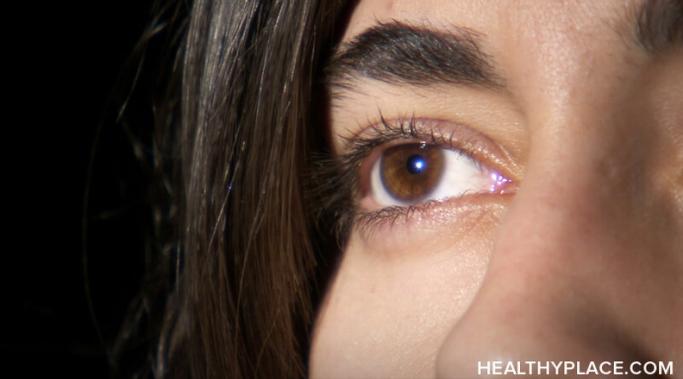I am living with dissociative identity disorder and I can't just "get over it." Would you tell someone with diabetes to "just get over it?" Dissociative identity disorder (DID) and other mental illnesses are illnesses. They all have causes, treatments, and greatly affect the individuals that have them. Mental illness is not a choice. It cannot be switched off and on at will. No one can wake up and decide they aren't going to be mentally ill that day. So why do some people expect those with mental illnesses like DID to just get over it?
Dissociative Living
Dissociative identity disorder (DID) includes the experience of hearing voices, medically referred to as auditory hallucinations. This is also a common symptom in several other mental illnesses, including schizophrenia, schizoaffective disorder and bipolar disorder. The experience of hearing voices in DID is quite different from the experience of hearing voices in other disorders, however, and the causes and treatments are not the same.
Life with dissociative identity disorder (DID) is a journey full of new discoveries, growth and understanding. It is also a journey full of denial, confusion, and pain. Just when you think you have a grasp on life with DID, something (a new alter, or a new memory, perhaps) comes along and shakes everything up. Life with DID can be a difficult journey, but it's not an impossible one.
While the experience of alters becomes the norm when you have dissociative identity disorder (DID), it can be difficult for those without the disorder to understand what the experience of having alters in DID is like. To continue with Mental Health Month and the #mentalillnessfeelslike campaign, I asked a group of people with DID to describe how it feels to have alters. Here is a glimpse of what it feels like.
What does life with dissociative identity disorder feel like? May is Mental Health Month and people around the world are sharing what mental illness feels like. To go along with the #mentalillnessfeelslike campaign, I asked a group of people with dissociative identity disorder (DID) to describe, in their own words, what having DID feels like. The answers were varied, with both positives and negatives. To one person, living with DID feels like, "having a war inside my head," yet to another, DID "feels like a gift." The answers show just how diverse DID really is.
For those living with dissociative identity disorder (DID), self-care -- even the most basic physiological and safety needs -- can feel like impossible tasks to fulfill, especially during times when self-care is most needed. If basic needs are unmet, this can hinder the healing process and make living with DID a little more challenging. You must meet your basic needs with DID self-care.
There is an undeniable link between dissociative identity disorder (DID) and child abuse. Child abuse can lead to mental health problems that occur in childhood and can continue into adulthood. People often relate childhood abuse to depressive disorders, anxiety disorders, and posttraumatic stress disorder (PTSD), but dissociative identity disorder has the most significant connection to childhood abuse and neglect, so much so that the connection between DID and child abuse cannot be ignored.
"How are you?" is a commonly asked question, but for those of us living with dissociative identity disorder (DID), the answer is not so simple. A person may seem alright on the outside, but can be hiding a tremendous amount of despair on the inside. One part may very well answer, "Great!" while another part wants to answer, "Horrible!" Most times, when living with DID, we end up telling people we're okay -- but are we really okay?
Mental illnesses are complex. Symptoms can be misinterpreted, resulting in a misdiagnosis. This is understandable, given that different disorders often share some similar symptoms. In cases of dissociative identity disorder (DID), there is often confusion between bipolar disorder and DID symptoms. While bipolar disorder and DID each have unique symptoms, there is some symptom overlap. It is important to recognize the differences in symptoms, as these disorders have different causes and treatments.
Dissociative identity disorder (DID) alters come in all shapes, sizes, and ages and you need to know how to work with young alters. Alters can stay the same age forever, change age depending on the situation (age-sliding), or age normally. Many systems have alters of various ages, including ones that are older and ones that are younger than the body. It is important to recognize these age differences and work with alters at age-appropriate levels. Young alters can be complicated to work with, but there are things you can do to work better with your younger alters in dissociative identity disorder.

